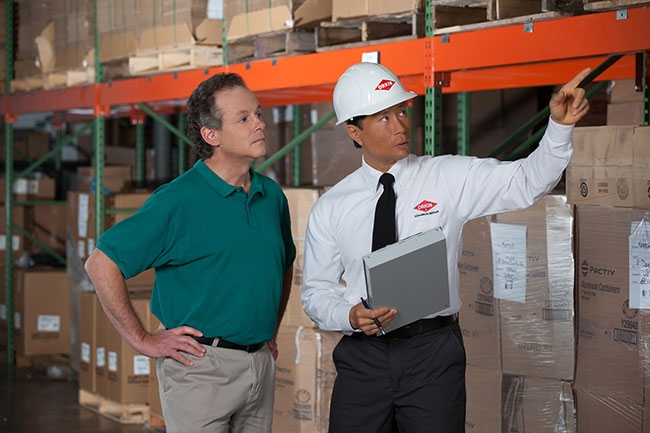
Equipment
Safety
Pest management: A key to food safety
A variety of consumer tastes in gardening breeding for desirable plant characteristics
November 8, 2017 By Alicia Sinia
 A pest management professional can help identify any conditions conducive to pest activity and create a program customized to a building’s unique needs. Contributed photo
A pest management professional can help identify any conditions conducive to pest activity and create a program customized to a building’s unique needs. Contributed photoPests in food-handling environments threaten product safety and create an unpleasant sight for employees and visitors. In addition to physically damaging the product or its packaging, some pests can carry and transmit diseases like E. coli, Salmonella and hantavirus. When products become infested or contaminated, they not only impact a business’s bottom line but also its reputation.
Flies, cockroaches, ants and rodents are the most common offenders, but facilities also need to keep an eye out for stored product pests. These pantry pests – such as weevils, Indian meal moths, flour and grain beetles – infest and damage both processed and unprocessed food products. These insects are highly adaptable and some can chew and burrow through packaging. They even thrive in small amounts of food such as spills, crumbs and build-ups in cracks, dead-end space in equipments, storage shelves and racking.
To maintain food safety, facilities should implement an Integrated Pest Management (IPM) plan that emphasizes preventive strategies and environmentally safe control techniques while employing the help of a facility’s sanitation and maintenance staff.
Sanitation – Proper sanitation not only eliminates dirt and grime from a facility but also helps get rid of food and water sources that attract pests. To make a facility less attractive to pests, clean up spills immediately. Even small puddles of water should be mopped and dried as soon as possible. Trash should also be taken out at least daily, and dumpsters should be kept at least 12 metres from the building. Garbage receptacles also should be sealed with tight fitting lids and hosed down regularly.
When it comes to cleaning, use a biological cleaner in drains to ensure dirt and grime are broken down in the hard to reach places. Spacing out equipment in the facility also makes cleaning easier. Regularly clean hard-to-reach areas, such as dead space in equipments, equipment footing and joints where food and organic matter build up over time. Store all food items off the floor on racks, as this will allow for good housekeeping and monitoring of pest activities.
Maintenance – Maintaining a facility goes a long way in preventing pests. Maintenance issues can impact sanitation and allow pests entry into your building. To help keep everything in tip-top shape, make sure you are repairing basic features, like window and door screens. Tears in the screens make it easy for pests to get inside. Ensure door sweeps are properly installed and maintained, as pests will try to sneak inside if there are any cracks. Air curtains at entrances can help keep flying pests out as well, especially in areas with trash receptacles or compactors.
While it may seem like a vanity repair, seal holes, gaps and cracks around the facility as well, as these can act as open doors for pests. To help eliminate water sources, fix leaky pipes, faucets and HVAC units as soon as possible. Pests don’t need much water to survive.
Employee Involvement – One of the best ways for a facility to improve their pest management program is to involve staff. First and foremost, food processing facilities should work with their pest management provider to schedule a staff IPM training. During this training, a provider can review pest-related best practices – like the first-in, first-out approach and perimeter and aisle spacing – and educate staff to identify common pests at the facility and properly report sightings. If staff observes pests during his or her daily activities, they should report them immediately, including what they have seen, where and when. To help this process run smoothly, establish a pest-sighting protocol so that everyone will know what to do. By reporting pest sightings, employees help the facility detect pests before they become a big problem. Maintaining thorough documentation also helps identify pest hot spots and trends for future IPM decision-making.
Once staff is trained, incorporate pest management techniques into his or her daily responsibilities. Pest management is a team effort and is most effective when everyone has a role to play. With the pest management responsibilities spread out, it is easier for the facility to adopt gold standard, preventive controls.
Food Safety is Critical – In facilities that produce food products, maintaining food safety is critical to the business’ success. A robust IPM program can go a long way in helping prevent product contamination. However, it is important to closely monitor pest activity and conducive conditions. When an infestation occurs or products are contaminated by pests, there are always factors that contributed to the pests’ presence.
Every facility is unique, and pest pressures can be affected by a variety of factors, including geography, climate and building design. A pest management professional can help identify any conditions conducive to pest activity and create a program customized to a building’s unique needs. By establishing an IPM program, you can take a proactive step toward keeping pests out, ensuring food safety and protecting your reputation.
Alice Sinia, Ph.D. is quality assurance manager for regulatory/lab services with Orkin Canada.
Print this page